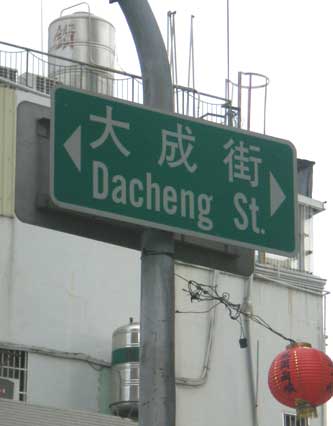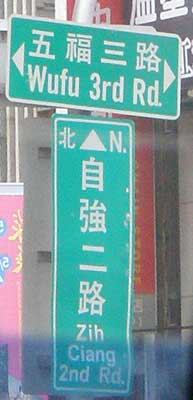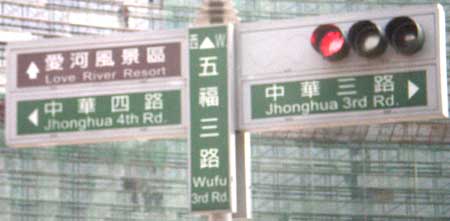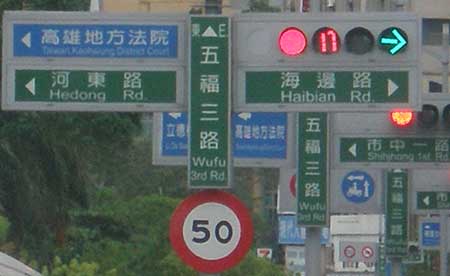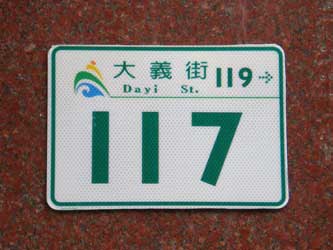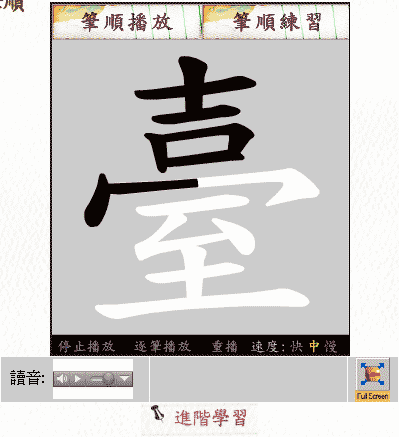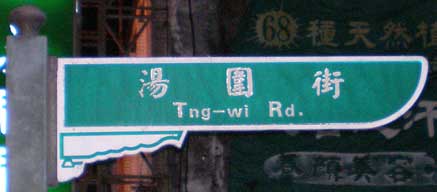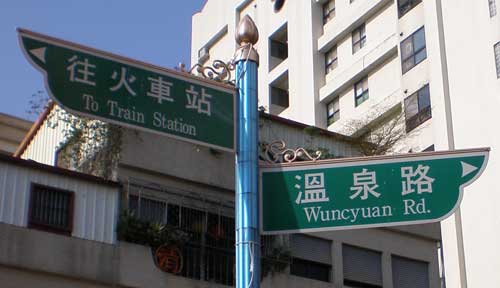Several months ago I wrote about the move by Taiwan’s Ministry of the Interior (MOI) to impose Tongyong Pinyin by instituting standards for the writing of place names. (See MOI and Tongyong Pinyin: update). I was told that my remarks had been translated into Mandarin and distributed to those involved. But I have never received any response, despite more than one follow-up call. Although I never much expected to receive a useful response anyway, I had hoped for at least something.
Keep in mind that these are remarks aimed at those in the central government, who, at least for the time being, are compelled to work within the framework of Tongyong Pinyin. Also, I tried to stick as much as possible to the examples in the government’s draft, thus my use of “Jhuzih Hu,” which is both Tongyong Pinyin and a name whose word parsing is more complicated than most.
I have amended a few details, deleted some sections with personal details, and removed the conclusion, which was mainly polite blah-blah-blah.
I would welcome comments and suggestions for revisions.
Response to Taiwan’s Proposed Guidelines for Place Names in Romanization and English
As you are surely aware, Taiwan’s government has a very poor record when it comes to romanization. So the government now has an important opportunity to show Taiwan’s foreign community and others here who care about standards and are pained by the nation’s sloppiness in this regard that it is finally giving the issue the care it deserves. Unfortunately, the proposed guidelines in their present state would do little to improve the situation and in some cases could make things worse. Specifically, the proposed guidelines have seven basic problems.
- Failure to use Hanyu Pinyin
- Failure to use apostrophes correctly
- Failure to use hyphens correctly
- Partial failure to indicate individual words correctly
- Failure to handle non-Chinese names correctly
- Failure to consider instances where tone marks might be useful or even necessary
- Failure to fix old, misleading spellings
Before I give details about the problems listed above I would like to note that the guidelines are, however, correct in one important way: Place names should begin with a capital letter followed by lower-case letters. The Taipei City Government made an enormous mistake when it instituted the practice of adding extra capital letters where none are needed.
| WRONG |
RIGHT |
| NanJing East Road |
Nanjing East Road |
| TianMu |
Tianmu |
| TaiNan |
Tainan |
The Taipei City Government’s foolish policy of ExTra CaPiTal LettErs also helped bring about another major problem in Taipei: the omission of apostrophes before syllables beginning with a, e, and o. This will be addressed in my second point. But first comes the introductory one.
1. Failure to use Hanyu Pinyin
I know that the issue of Hanyu Pinyin vs. Tongyong Pinyin is not supposed to be on the table, so I do not expect any action to be taken on this for now. Nevertheless, I believe it necessary to remind the Ministry and those responsible for reviewing the guidelines that members of the international community — both within and outside of Taiwan — overwhelmingly support the adoption of Hanyu Pinyin for Mandarin and oppose the use of Tongyong Pinyin. There is simply no green/blue divide among foreigners on this issue; an overwhelming majority of “green” foreigners oppose Tongyong Pinyin and strongly support Hanyu Pinyin; and an overwhelming majority of “blue” foreigners feel the same way. For foreigners, this is a practical matter, not a political one.
The government’s insistence upon the use of Tongyong Pinyin has cost Taiwan respect and is having an impact on students’ choices of where to study Mandarin. Moreover, the lack of a consistent, correct, and internationalized romanization system considerably complicates Taiwan’s efforts to lure more tourists to the island. The government should abandon Tongyong Pinyin immediately, before it does any more harm. Too much time, money, and effort have been wasted already.
Nevertheless, some of the damage that has been done could be repaired if the government implements the best possible guidelines for the use of the romanization system it continues to insist upon. The proposed guidelines, however, are at best insufficient and thus are in need of significant revision.
This brings me to my main points.
2. Failure to use apostrophes correctly
The MOI guidelines correctly indicate that something is needed to distinguish syllables beginning with a, e, and o. But the MOI guidelines use the wrong method to indicate these breaks.
The MOI says that people should use a hyphen before syllables beginning with a, e, and o. This is a very bad idea. The correct way to do this is by using an apostrophe. Here is the rule Taiwan should adopt: “Put an apostrophe before any syllable that begins with a, e, or o, unless that syllable comes at the beginning of a word or immediately follows a hyphen or other dash.”
Table: Examples of how to write words that have inner syllables beginning with a, e, or o
| WRONG |
RIGHT |
| Da-an |
Da’an |
| Su-ao |
Su’ao |
| Ren-ai |
Ren’ai |
The main reason it is crucial not to use a hyphen in such places is that hyphens have other important uses, which I will discuss next.
3. Failure to use hyphens correctly
Hyphens are especially important when it comes to assigning names to places and things (especially things representing abbreviations and things that join two places).
| WRONG |
RIGHT |
REASON |
| Suhua Expressway |
Su-Hua Expressway |
This road runs between Su‘ao and Hualian |
| Beiyi Expressway |
Bei-Yi Expressway |
This road runs between Taipei (Taibei) and Yilan. (And for heaven’s sake don’t make this “Pei-Yi.”) |
| Jianan dazun |
Jia-Nan dazun |
Jia-Nan refers to Jiayi and Tainan (嘉南大圳). |
| Huajiang Bridge |
Hua-Jiang Bridge |
The bridge joins Wanhua and Jiangzicui. |
| Sun Moon Lake |
Sun-Moon Lake |
These are joined elements. |
| Taida |
Tai-Da |
An abbreviation for Taiwan Daxue (台灣大學) |
See https://pinyin.info/readings/texts/hyphens.html for details and additional ways that hyphens can help clarify Pinyin.
4. Partial failure to indicate individual words correctly
The guidelines are correct that there should be spaces between words (詞) but not between mere syllables (字). But the guidelines are too vague — and sometimes incorrect! — about how to determine what a word is (and thus what should be written separately).
Taiwan should use the guidelines that have already been worked out for these principles and have been accepted internationally. I am referring, of course, to the guidelines for Hanyu Pinyin, which are covered in general here — https://pinyin.info/rules/pinyinrules.html — and in detail in two books: Chinese Romanization: Pronunciation and Orthography (漢語拼音和正詞法) (ISBN 7-80052-148-6) and 新華拼寫詞典 (ISBN 7-100-03414-0). The latter book is sometimes available at the main Eslite bookstore near Taipei City Hall. The best Mandarin-English dictionary following these principles is the ABC Chinese-English Comprehensive Dictionary, edited by John DeFrancis; you should also use it as a standard reference.
Supporters of Tongyong Pinyin have often touted that system’s supposed “compatibility” with Hanyu Pinyin. Having the two systems share the same basic guidelines would be a good way to demonstrate that this is something more than empty words.
Most of the examples in the guidelines are correct. A few need revision.
| WRONG |
RIGHT |
| Yangmingshan |
Yangming Shan |
| Jhuzihhu |
Jhuzih Hu [Zhuzi Hu] |
5. Failure to handle non-Chinese names correctly
Just a few days ago President Chen Shui-bian (whose name, I note, is spelled in Hanyu Pinyin, not Tongyong Pinyin; but no one confuses him with the president of the People’s Republic of China!) was in Tainan County to mark the opening of some new roads around the Southern Taiwan Science Park. Each of the three roads has been given a name from an aboriginal language, something the president praised. Yet the government’s guidelines would force Mandarin upon the aboriginal names, changing them to something that would be incorrect.
Similarly, the administration has supported Aborigines regaining their original names and even villages reacquiring their original, non-Chinese names. (See, for example, http://news.yam.com/cna/garden/200708/20070801554267.html )
Ideally, no Chinese characters would be used with some of these names; but I don’t expect that to happen soon.
| WRONG |
RIGHT |
| Kaidagelan |
Ketagalan |
| Tailuge |
Taroko |
| Sihmakusih (司馬庫斯) |
Smangus |
Attention must also eventually be given to the issue of using Sinitic languages other than Mandarin (specifically Taiwanese and Hakka) in place names.
6. Failure to consider instances where tone marks might be useful or even necessary
Because Mandarin is a tonal language, a few names that are different may appear to be identical in romanization unless tone marks are included. In practice, only a very small percentage of names are subject to this ambiguity. Taipei, for example, has more than 600 different street names; but only the following would need attention there.
| Chinese characters |
Pinyin and English mix |
| 景華街 |
Jǐnghuá St. |
| 景化街 |
Jǐnghuà St. |
| 同安街 |
Tóng’ān St. |
| 通安街 |
Tōng’ān St. |
| 萬慶街 |
Wànqìng St. |
| 萬青街 |
Wànqīng St. |
| 五常街 |
Wǔcháng St. |
| 武昌街 |
Wǔchāng St. |
| 向陽路 |
Xiàngyáng Rd. |
| 襄陽路 |
Xiāngyáng Rd. |
For the benefit of foreigners and to aid clarity, tone marks should follow the practice of Hanyu Pinyin, not of Zhuyin Fuhao, i.e. first tone should be indicated (ā, ē, ī, ō, ū, and ǖ; not a, e, i, o, u, and ü). This is especially important because most names are written without tone marks; we should not get these confused with words that have only first-tone syllables, such as Tōng’ān (通安).
One possibility would be to tone marks on only the less common name(s). For example, we would write 五常街 as “Wǔcháng Street” but 武昌街 simply as “Wuchang Street” (rather than as “Wǔchāng Street“).
Some would advocate using tone marks on most if not all signage with Pinyin. This deserves study.
7. Failure to fix old, misleading spellings
Several years ago when the central government promulgated Tongyong Pinyin it kept the old spellings for some cities and all counties (other than Yilan, which changed from “Ilan”). This was a mistake. The old spellings are inherently ambiguous in pronunciation and are often quite simply misleading.
The government should end the policy of retaining most old spellings. Quite simply, there is nothing useful to foreigners or anyone else about retaining, for example, “Taitung” for what should be spelled “Taidong.” A limited, practical approach for the time being would be to immediately change all names that are spelled the same way in Tongyong Pinyin and Hanyu Pinyin, with the possible exception of retaining “Taipei” instead of switching to “Taibei.”
| WRONG |
RIGHT |
| Taitung |
Taidong |
| Matsu |
Mazu |
| Kinmen |
Jinmen |
| Hualien |
Hualian |
| Chiayi |
Jiayi |
| Pingtung |
Pingdong |
| Keelung |
Jilong |
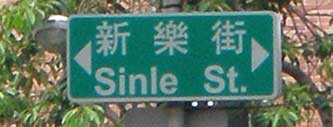 During an extremely brief trip a few weeks ago to Gāoxióng, Taiwan’s second-largest city, I was able to grab a few photos of signage there. Most of these were taken from a moving taxi; thus the poor quality and lack of much diversity. But these are the best I could do under the circumstances.
During an extremely brief trip a few weeks ago to Gāoxióng, Taiwan’s second-largest city, I was able to grab a few photos of signage there. Most of these were taken from a moving taxi; thus the poor quality and lack of much diversity. But these are the best I could do under the circumstances. 